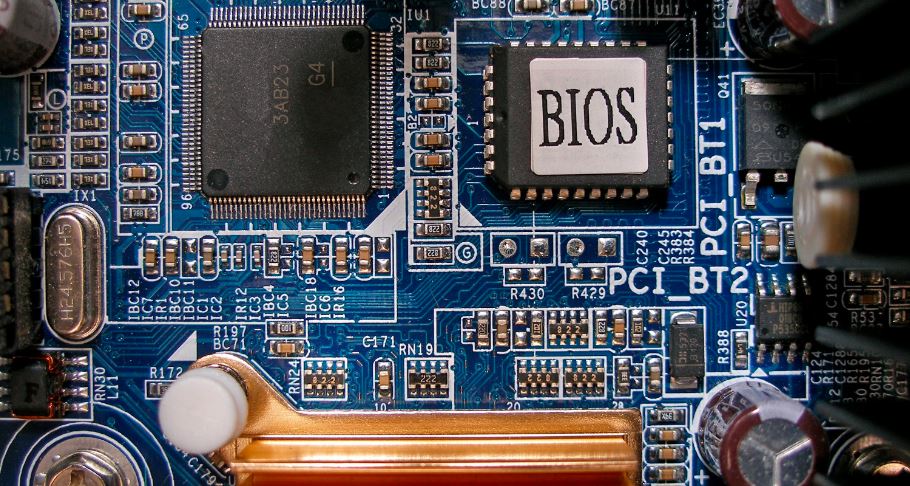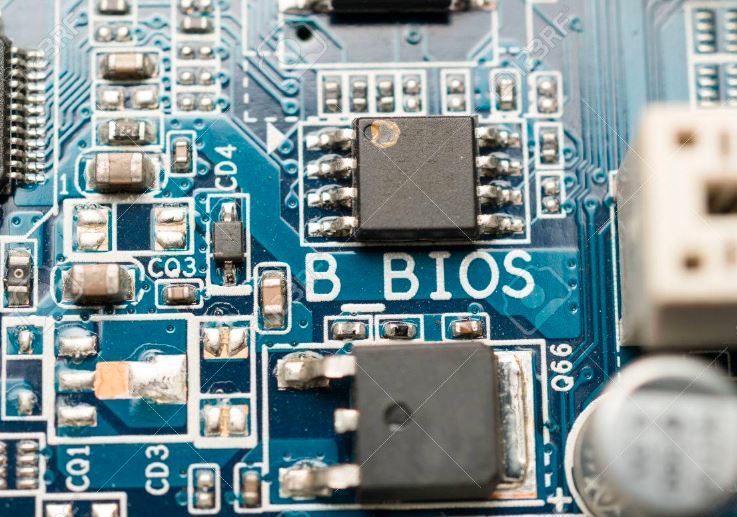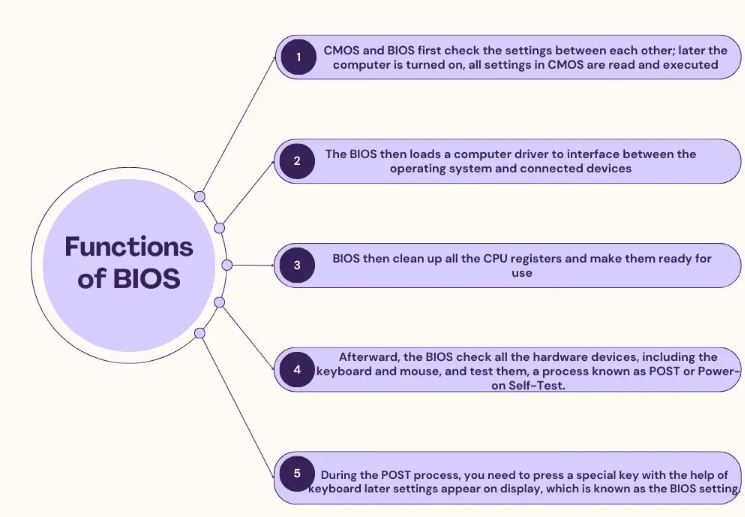What is BIOS ?

The abbreviation “BIOS” refers to a program that is stored in nonvolatile memory such as ROM (Read Only Memory) or flash memory. This software gives you the ability to configure and access your computer system at the most fundamental level possible.
Despite the fact that the majority of individuals do not have any need to deal with the BIOS on a computer, it is stillbeneficial to have knowledge of the BIOS. It may be found on motherboards, which are a kind of software that is pre-installed on computers that run Windows and goes into action whenever the machine is started. The central processing unit (CPU) reads the basic input/output system (BIOS) before loading an operating system. The next duty is to investigate all of the hardware connections and identify all of the devices that you have installed.
The primary purpose of the BIOS is to configure the hardware and launch an operating system. Additionally, it includes general code that is required to manage display screens, the keyboard, and other operations within the computer. The computer integrates the BIOS, a piece of software, to manage the hard disks. Because it is available before the computer system boots up, it cannot dwell in the Random Access Memory (RAM).
In actuality, the computer system stores it on the ROM, specifically on the EPROM chip, also known as erasable programmable read-only memory. When the computer turns on, the central processing unit (CPU) accesses the EPROM and provides control to the BIOS.
The fundamental goal of the design of the system was to ensure that it was compatible with a wide variety of devices, which ultimately resulted in the creation of a complementary system chipset. Software not part of the an initiate some functions included in the BIOS library, responsible for operating and controlling system peripherals.
The user interface, detailed in more detail below, allows users to perform a variety of tasks:
- Users may perform the hardware setup.
- They may choose the boot drives.
- They are able to adjust the system’s clock.
- Users are able to activate and disable certain system components via the BIOS menu.
- When it comes to the BIOS’s user interface, it offers the ability to create password prompts for protected access.
BIOS Availability
Current computers can locate the BIOS software on any motherboard. Due to the fact that the BIOS is a component of the motherboard, access to and setting of the on personal computers are not dependent on the kind of operating system that is installed. It does not matter what kind of operating system is running on the computer, such as Windows 7, Windows 8, Windows 10, Windows XP, Linux, Windows Vista, Unix, or even if there is no operating system at all; the runs independently of the operating system environment. This is because the BIOS is not reliant on anyone.
What is included in a BIOS?

All of the instructions necessary to load fundamental computer hardware are included in the software. Additionally, it has a test known as a POST (Power-On Self-Test), which is considered to be a test. Through the process of verifying that the computer satisfies the criteria, the POST assists the computer in booting up correctly. Your computer emits various types of beeps when the POST test fails.
Functions of BIOS

The contains a variety of instructions required to load the hardware and is also responsible for loading the operating system. The following is a discussion of the primary functions that are performed by a basic input/output system (BIOS):
- Self-Test (POST) is the BIOS power-on test : Because it is an integrated diagnostic application, it guarantees that the computer hardware will operate correctly. A check is performed inside the system to ensure that the computer has all of the required components and capabilities. Effectively, POST serves this purpose. During the process of starting up, it is certain that the computer is effectively loading tasks, such as the use of memory, a keyboard, and other associated components. The computer will emit a mixture of beeps to show the fault type in the event that the POST test fails at the time of the test.
Once the POST test has successfully completed its entirety, the system will proceed to boot. The computer will start loading the operating system from one of the attached disks after successfully completing the self-test and loading the fundamental instructions. In addition, users of the computer have the ability to modify the settings of the, with the assistance of a setup screen that is located on the computer.
The information that is included inside the may also be saved on the flash memory, which can be changed by users of the computer once an update has been released by the manufacturers. The its name suggests, serves various functions such as reading and writing to a hard drive and floppy disc, displaying values on the screen, and reading keystrokes, thereby positioning itself between the computer and external devices.
2. BIOS drivers: The non-volatile memory, which primarily provides information on the fundamental components of the computer hardware, houses the drivers for the BIOS.
3 Bootstrap Loader: Proper execution of the POST program enables the identify and locate the appropriate operating system. The responsible for searching for and initiating the operating system boot software. It also contains the program bootstrapping loader. When the recognizes one, it initiates the booting process, which is the transfer of access to the operating system.
BIOS Security

There is a special aspect of cybersecurity that pertains to protecting the BIOS. Despite this, it remains crucial to maintain control over it, as several hackers have the ability to execute malicious code on the operating system, potentially causing significant harm. The security organization Cylance demonstrated in 2017 that modern security holes could potentially enable ransomware applications to function within the UEFI of a motherboard device. Other personal computers also profit from vulnerabilities in the BIOS.
Read also : Linux Commands With Syntax, Examples (Lession- 18)

I am expert skilled in SEO content Creation. My name is Narinder Kumar. I have an experience in creating websites, (SEO) Content Creation , Articles Blogs & more. Currently I prepared a SEO Content in Eduction Purpose, Entertainment, Finance Management etc.

